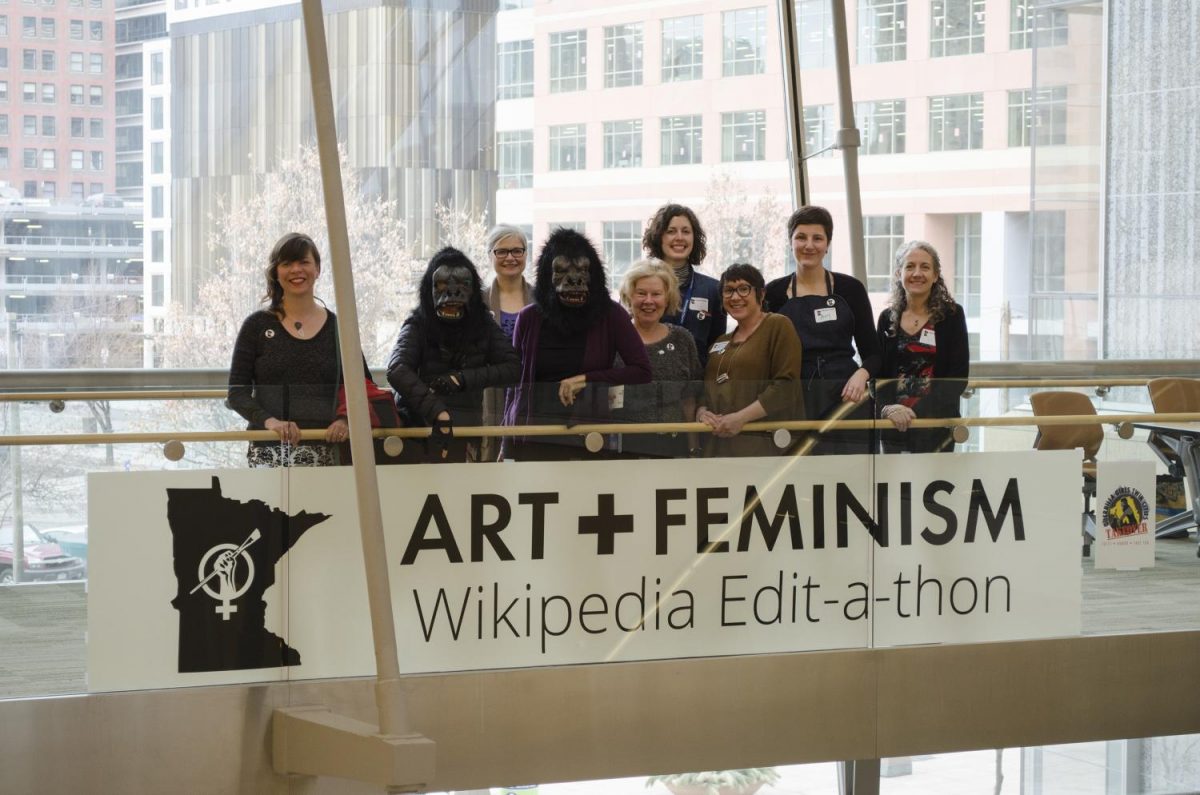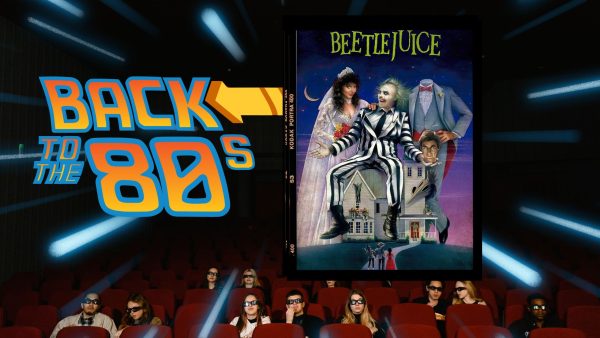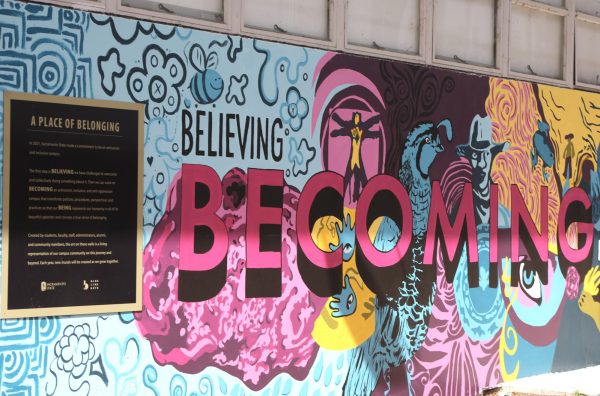Guerilla Girls go ape: Feminist artists combat oppression
Grilledcheese8 / Wikimedia Commons
Members of the Guerilla Girls Kathe Kollwitz, left, and Frida Kahlo, right, stand with organizers of the 2016 Art+Feminism Wikipedia Edit-a-Thon. The Guerilla Girls use humor, facts and eye-catching visuals to highlight gender and racial inequalities in art, politics and pop culture. They will arrive to Sacramento State on Oct. 5 to host a lecture about feminism.
October 2, 2017
Feminist artist collective The Guerrilla Girls will arrive at Sacramento State to host a lecture discussing their “crazy, creative” activism on Oct. 5 in the University Union ballroom.
The Guerilla Girls is composed of anonymous women wearing gorilla masks who address feminist and other social justice issues in the arts through public demonstrations, exhibitions, videos, posters and billboards around the world.
The New York-based group was formed in 1985 by a woman who goes by Kathe Kollwitz, an alias named after the late german painter. According to Kollwitz, the group uses humor, facts and eye-catching visuals to highlight gender and racial inequalities in art, politics and pop culture.
“Our anonymity keeps the focus on the issues and away from who we might be,” Kollwitz said via email.
The formation came about after Kollwitz viewed an exhibition at New York’s Museum of Modern Art (MoMA) in 1984, which claimed to feature the best contemporary art in the world. The exhibition, “An International Survey of Painting and Sculpture,” presented 169 artists, all of whom were white Americans or Europeans.
Only 13 of the featured artists were women, and after the museum’s curator said that any artist who wasn’t in the show should rethink “his” career, Kollwitz and a group of other women picketed outside the MoMA.
Frustrated by the fact that they gained little attention from passersby, the group hung posters with facts and data around SoHo in New York City that exposed sexist and racist biases among art collectors, curators and critics in positions of power. The first posters were black and white and only contained a list of art galleries in New York that displayed less than 10 percent of female artists.
Kollwitz said that over 55 women have been members of the collective throughout its 32-year history, some staying for weeks, while others remain in the group for decades. In order to maintain members’ anonymity, the Guerilla Girls always remained small in number at any given time. New members can join the group only if they are invited by current or former members.
The Guerilla Girls have spoken at a number of universities, mingling with students and faculty along the way. Their visit to Sac State is connected to an exhibit at the Verge Art Center titled “Not Ready To Make Nice: Guerrilla Girls in the Artworld and Beyond,” which highlights some the group’s most prominent work.
The lecture at Sac State was co-sponsored by the Women’s Resource Center. The program coordinator of the WRC, Aisha Engle, said that she is looking forward to having the radical feminists on campus.
More Guerrilla Girls billboards up in Minneapolis! Plus projections, posters, banner. #ggtakeover #OscarsSoWhite pic.twitter.com/tX9pj1xwMm
— Guerrilla Girls (@guerrillagirls) March 2, 2016
The Guerilla Girls have travelled to places like Iceland, Istanbul, London, Los Angeles, Mexico City, Rotterdam, Sao Paolo and Shanghai to spread their message of radical feminism. Some projects include artworks that expose the museums they are displayed in, as well as signs that highlight racial and gender disparity among Oscar nominees in 2016.
WRC program assistant Indiana Womack said he hadn’t heard of the activists before the event was organized but became intrigued by the group and plans to attend the lecture.
“Sometimes we need art that kind of enters our daily lives in subversive ways,” Womack said. “Public art is really valuable, but we also need graffiti and guerrilla art and little old ladies yarn bombing. That’s a valuable part of our social experience.”
Kollwitz said she hopes Sac State students will be inspired by the lecture and stand up for their beliefs amid today’s tumultuous political climate.
“At Sacramento State I’ll be talking about our crazy, creative kind of activism,” Kollwitz said in an email. “This is a time for everyone to resist repression. We’ve developed a game-changing way of doing political art, to try to change people’s minds about issues. It’s a strategy anyone can use.”










































































































































